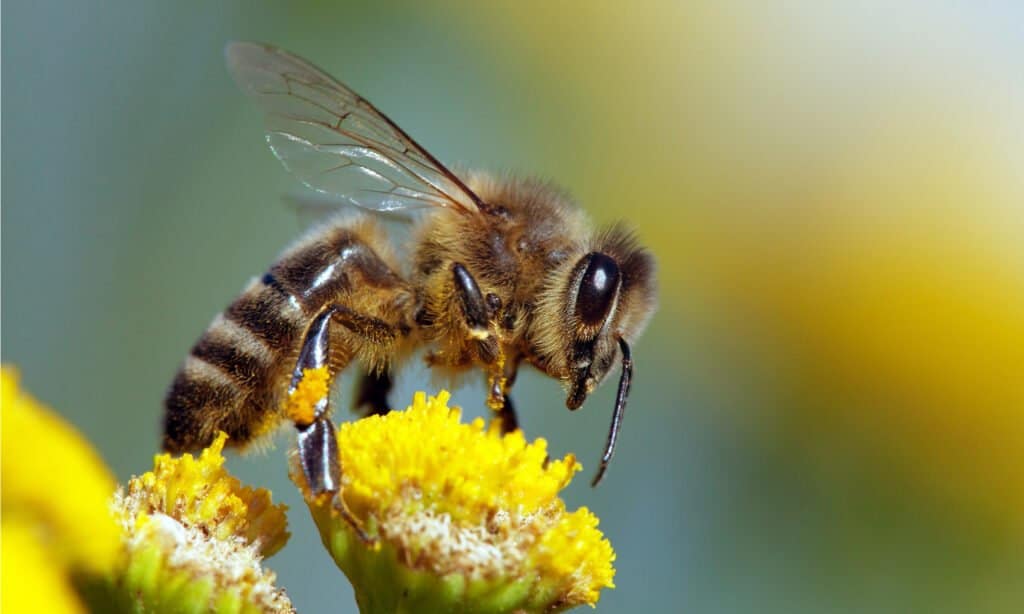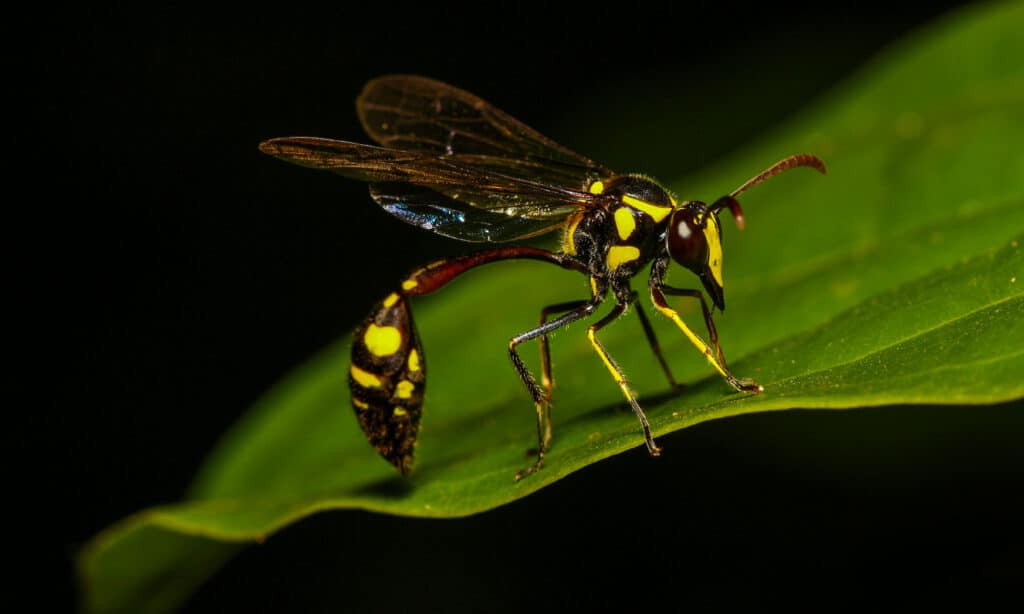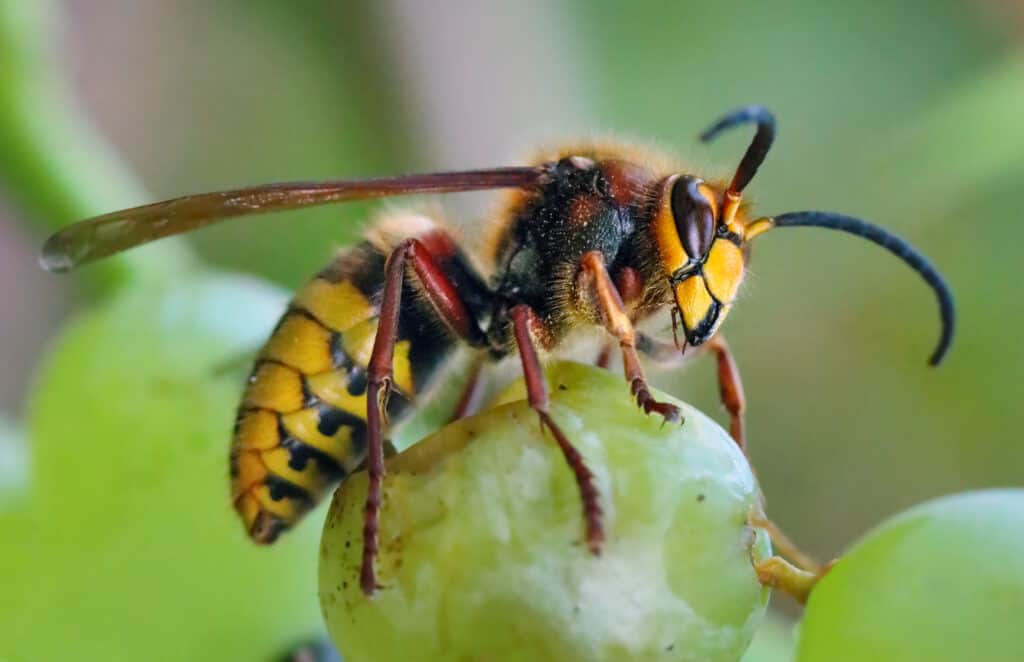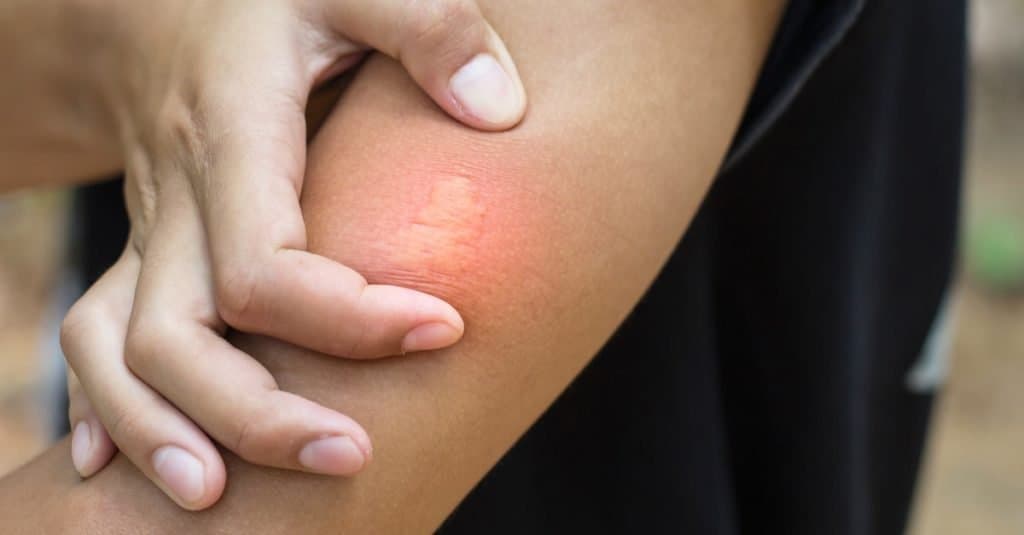When people think of bees, what usually comes to mind is the black and yellow fuzzy, striped honey bees that live in hives. However, the truth is that there are several bees found in Florida that are much more diverse and unique than that. Bees are critical to the survival of humanity, and honey bees provide much-needed agricultural labor for humans and are essential for farming.
You can find bees in Florida in various sizes and colors. Some bees are aggressive and dangerous, while others are harmless and vital to nature. There are some bees are independent; others live in large social communities. Some are numerous and familiar, while others are rare and threatened.
Over 4,000 species live in the United States, and Florida has over 300 types of bees. However, only 29 species of bees call the state of Florida their home.
Although bees are beautiful, diverse, and essential to humanity, these insects can become problematic if they establish nests near your home. Stinging insects are beneficial when pollinating crops and other plants and hunting and feeding on nuisance insects to keep populations down. However, as much as bees are beautiful creatures, they also can be dangerous, so it is essential to be wary of them. The most common bees with potent stings in Florida are paper wasps, yellow jackets, and honey bees, but many other bees can produce a powerful sting. Below is a ranking of the most common bees found in Florida, including wasps, and other insects in Florida ranked from most to least painful sting.
Paper Wasps

The paper wasps are one of six bees found in Florida that can be aggressive.
©JorgeOrtiz_1976/Shutterstock.com
Paper wasps are the most painful bees found in Florida. While paper wasps have the potential to be dangerous and aggressive, these bees generally don’t attack humans unless they feel like themselves or their nest is being threatened. Paper wasps only sting to protect their colony. When they sting, the bees release toxins that can harm mammals like birds, wolves, cats, and dogs. These bees have a cinched waist, just like other wasp species, and long legs that hang down while flying. Depending on the specific species, they have black and brown bodies and can have yellow or orange markings. The wings of the paper wasp are gray and have a smooth stinger that allows the bee to sting its victim repeatedly.
Sting Feeling
The Schmidt pain index is a pain scale rating insect stings on a scale of 0 to 4 – with 0 being no pain at all and four being excruciating. The paper wasp was ranked at a 3.0 on the Schmidt Pain Index. When a paper wasp stings you, it is described as the same feeling as spilling acid on your skin. It also leaves a bitter taste in your mouth. The upside is that paper wasps won’t sting you if they are away from their nest. They won’t attack you unless you step on them, trap them, or press them against your skin. Paper wasps are social creatures who aggressively defend their nest and only go out of their way to sting you if you are close to or disturbing it. Therefore, it is unlikely they will sting you if they are away from their nest.
Honey Bees

Honeybees are pollinating insects that call Florida home.
©Daniel Prudek/Shutterstock.com
Honeybees are usually not aggressive to humans, and the worker bees typically focus on collecting food for the hive. These bees can live in domestic and residential areas but prefer to live in woodlands, gardens, orchards, meadows, and other regions where flowers are abundant. Honeybees make their nests inside tree cavities and under the edges of large objects to hide from predators. Honeybees are usually harmless and docile to humans and will not sting unless attacked. Still, all honeybees respond aggressively when their colony is disturbed and may even involve hundreds or thousands of stinging bees. Only female honeybees can sting. Each hive of honey bees contains 60,000 worker or female bees with another few hundred males and a single female queen bee. Worker or female bees are the colony’s soldiers and the hive’s protectors. The worker bees’ sole function is gathering nectar, pollinating, and defending the base.
Sting Feeling
When someone gets stung by a honey bee, the bee sting itself is minor and consists of instant, sharp, and burning pain where the place of the sting happened. After the sting, a normal reaction consists of swelling and redness followed by itchiness. Honeybee stings are thought to be very painful, but the response and severity depend on the person and the amount of poison that enters the victim’s immune system. After the initial pain of the sting fades, a period of itching and swelling follows. Where the bee stings you also depends on how bad the pain is. The most painful locations are the nostril and upper lip. The honey bee ranks at number two on the Schmidt Pain Index scale.
Yellow Jackets

Yellow jackets are similar to paper wasps.
©Henrik Larsson/Shutterstock.com
Much confused with their cousin, the bee, yellow jackets are way more aggressive. Yellow jackets are moderately painful bees found in Florida. While honeybees and yellow jackets share the same yellow and black stripe, honeybees have hairs or fuzz on their body, while yellow jackets are smooth and shiny. Yellow jackets in Florida are the common name for predatory social wasps of the genera Vesppula and Dolichovespula. In English-speaking countries, they are more commonly referred to as just wasps. Many species in yellow jackets vary in appearance but are usually characterized by their yellow and black striped abdomens or white and black branded abdomens. Yellow jackets are similar to paper wasps except for their wider stomach and shorter legs. They are also similar to paper wasps because they also have smooth stingers.
Sting Feeling
Yellow jacket wasps deliver a sting of severe pain that persists for up to 10 minutes, but burning at the sting site can last up to one or two hours. When a yellow jacket stings you, it pierces your skin, and the stinger injects poisonous venom that causes sudden pain. Unlike bumble bees, which can only sting humans once since they inject their stinger into you, a yellow jacket can sting you multiple times. For most people, a yellow jacket sting only causes minor discomfort that passes within a few hours. Symptoms that follow the site can include redness and swelling. A yellow jacket sting is rated a two on the Schmidt Pain Index.
Bald-faced Hornets

The bald-faced hornet is more related to yellow jackets and paper wasps than actual hornets.
©Ernie Cooper/Shutterstock.com
The bald-faced hornet is known for its colossal size, painful sting, and black-and-white pattern. Bald-faced hornets are actually more related to yellow jackets and paper wasps than hornets. They are called “hornets” because of their substantial hornet-like size, where adults can grow ½ to ¾ of an inch in diameter. The Queens of the bald-faced hornets are the most prominent members of the colony. These insects have long and slender wasp-like bodies that are black and off-white striped covering their face, abdomen, and thorax. Be careful, because the bald-faced hornets are extremely aggressive. Unlike the honey bee, these insects are pretty aggressive and will attack if their space is invaded or their nest is disturbed. It is reported that the bald-faced hornet usually attacks the facial area when they sting humans. In addition, these insects are carnivorous and prey on other insects like tiny spiders and flies.
Sting Feeling
The bald-faced hornet ranks as a two on the Schmidt Pain Index and the sting is described as “rich, hearty, slightly crunchy” and relates it to your hand getting smushed in a revolving door. After being stung, the infected area can throb for five minutes before subsiding. Unlike other bees that only sting once, the bald-faced hornet can sting multiple times because their stingers are not barbed like other bees. The bald-faced hornet sting injects venom into its victim. After the sting, symptoms include warmth, redness, itching, and pain and begin immediately after being stung.
Mud Daubers

The mud daubers are not typically aggressive and are one of the types of bees found in Florida.
©Preecha Ngamsrisan/Shutterstock.com
Mud daubers are an independent and solitary species of stinging insect. This insect is named after the unique mud and other organic materials they use to create its nests. These insects more often than other bees, construct their nests on the outside of people’s homes. Mud daubers are black wasps with yellow patterns and super slender bodies connecting the thorax to the abdomen together. Their bodies are so thin that these bees look as though they have been “stretched.” The females inside the safety of their nests create hundreds of individual cells that host their developing young. Female mud-daubers prey on spiders to paralyze and feed their young. Mud daubers generally don’t sting people and are not an aggressive species. However, care should still be taken around them, or there is a small chance you will get stung. Mud daubers are one of the least painful bees found in Florida.
Sting Feeling
Mud daubers are not aggressive and usually don’t sting humans. However, care should still be taken in the presence of a mud dauber nest because there is still a slight chance that more aggressive insects will take it over. Even though the risk of being stung by a mud dauber is unlikely, in the event that it does, it will feel like a typical bug bite or sting. The venom from the sting is mild so you will not experience extreme pain or swelling like other stings. Specific symptoms from these stings include redness or discoloration. These insects do not attack to defend their nest like other social wasps. This sting rates only a one on Shmidt’s pain scale for insect stings.
European Hornets

The European hornet can be distinguished by its striking yellow appearance with black bands across its abdomen
©TTstudio/Shutterstock.com
European hornets, most commonly called giant or brown hornets, are enormous in size. These hornets are the only true hornet native to the United States, and you can find them in the state of Florida. They are characterized by their brown color and yellow stripes along their abdomen. The face of the brown hornet is a paler shade than the rest of its body. These insects grow between ¾ and 1 ½ of a full inch in length. These hornets have long, wide bodies with two wings and six legs. What is most unusual about these hornets compared to other stinging insects is that they are active throughout the night. Along with causing painful stings to humans, they are detrimental because they can cause damage to trees and other shrubs by stripping the plant’s bark and different outer layers off to make their nest and eat sap.
Sting Feeling
Despite its large size, the European hornet is only as painful as the honey bee sting However, unlike honey bees, it has a smooth stinger and can sting a person multiple times. The European hornet sting is described as a matchhead that flips off and burns your skin. These hornets rank at level two on the pain index like honeybees and blad-faced hornets.
Tips for Preventing Bee Stings
- Don’t swat flying insects; if one lands on you, gently brush it off and calmly walk away.
- If you see groups of bees together, observe their flight pattern to find their nest site and avoid it.
- Insects are attracted to floral and sugary perfumes, lotions, and hair products. So avoid these when going out into nature.
- Yellow jackets specifically are attracted to sugary sodas and may fly into soda cans. If you are drinking out of a can and can find a glass, pour it into a clear glass so you can see what you are drinking.
- Keep your pet food and garbage cans covered.
How to Treat a Bee Sting

Close-up of allergic reaction to a bee sting on human skin. Seek immediate medical attention if you are allergic to bee stings.
©WIRACHAIPHOTO/Shutterstock.com
There are many bees found in Florida. When you get stung by a bee, it can happen fast; the most important thing is staying calm. To help alleviate panic from a sting, knowing what to do when the day comes is essential. Once you get stung, the most critical thing to do is to take the stinger from the bee out quickly. The longer the stinger stays in, the more venom it releases, making it more painful to the personal pain and swelling.
Follow these steps to treat a bee, wasp, or hornet sting.
- Stay calm. A bee will only sting you once, but a wasp or hornet can sting you multiple times and you don’t want to infuriate the insect by acting crazy. Walk away calmly from the previous area to avoid more attacks.
- Remove the stinger by scraping over it or with a piece of gauze. Never remove a stinger with tweezers because squeezing the area can cause more venom to release into your skin.
- After you get the stinger safely out, wash the sting site with water and a sensitive soap and apply an ice pack to assist with swelling. However, if swelling continues and moves to other parts of the body other than the area where you got stung, like the face and neck, go to the emergency room immediately because you may have a severe, life-threatening reaction to the sting. Other signs of a life-threatening allergic reaction to a bee sting are dizziness, nausea, hives, and difficulty breathing.
- Seek over-the-counter medication such as Advil, ibuprofen, and at-home remedies.
Easing Bee Sting Pain
There are many over-the-counter remedies for relief when it comes to bee stings, but many people prefer these homemade concoctions to other store-bought medication. You most likely have these items at home. Apply any of the following to a bee sting, and you will find relief from the pain.
- Toothpaste
- Damp tea bag
- Preparation H
- The cute side of an onion
- A poultice made of chewing a piece of plantain
- A paste of baking soda and water
Any of these solutions with a bag of ice, aspirin, and ibuprofen should help ease the pain of a bee sting. Cortisone cream and antihistamines will also help reduce swelling and itching.
What To Do if You Are Severely Allergic to Bees
If you are allergic to bees and get stung, call 911 if you have a severe reaction that may be anaphylaxis- even if you only have a few symptoms. If prescribed an emergency epinephrine autoinjector (EpiPen), use it immediately, as your doctor directed. Anaphylactic reactions to a bee or wasp sting can start two hours after the sting initially takes place. After the sting, hives and other symptoms like difficulty breathing and swallowing will develop.
The photo featured at the top of this post is © Haiduchyk Aliaksei/Shutterstock.com
Thank you for reading! Have some feedback for us? Contact the AZ Animals editorial team.






